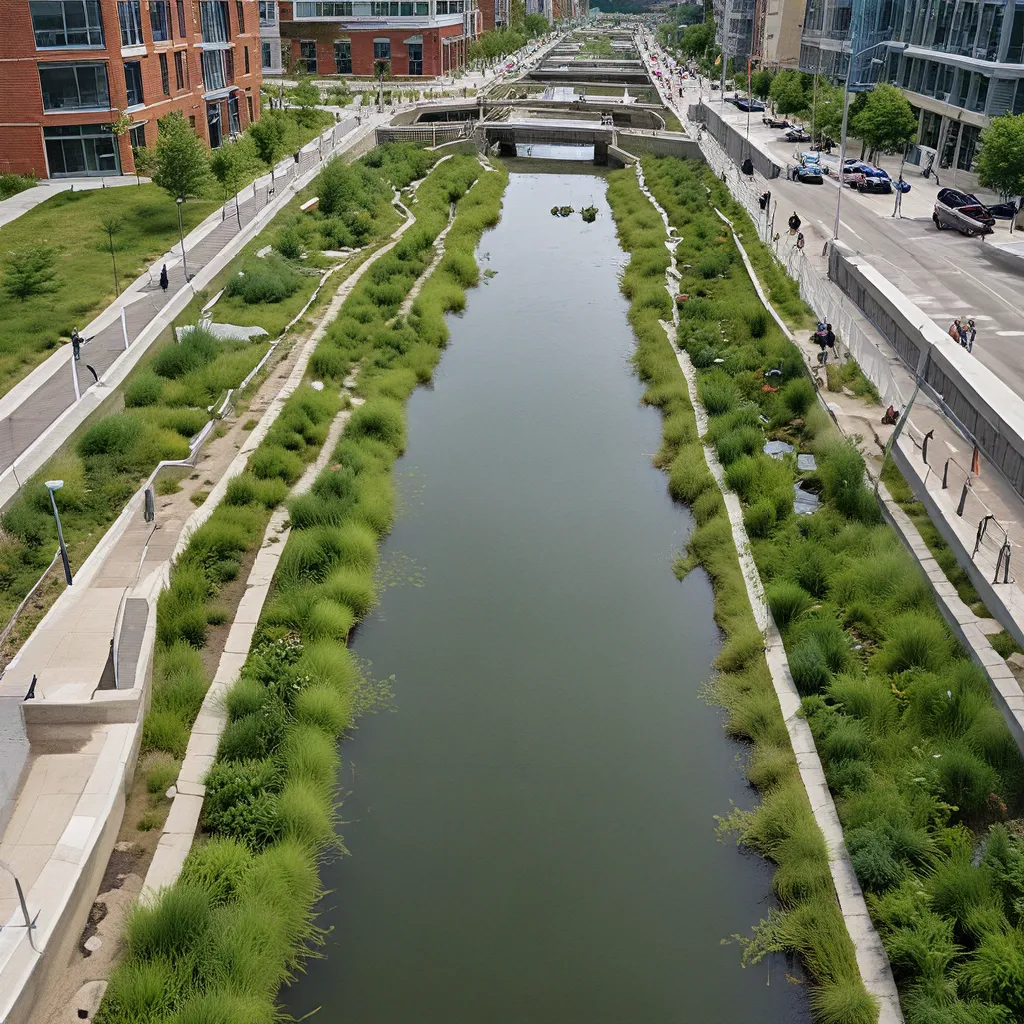
We’ve all seen it – those unsightly wastewater treatment plants, hulking concrete monstrosities that seem to loom over our cities like relics of a bygone industrial age. But what if I told you that the future of wastewater management is not just about function, but about form – about integrating natural solutions into the very fabric of our urban landscapes?
Rethinking Wastewater: From Eyesore to Ecosystem
As a sustainability enthusiast, I’ve long been fascinated by the intersection of wastewater treatment and urban design. After all, these facilities are essential to the health and well-being of our communities, but they don’t have to be the eyesores we’ve grown accustomed to. In fact, by embracing nature-based solutions and green infrastructure, we can transform these once-dreary sites into vibrant, living ecosystems that enhance the livability of our cities.
Just imagine a wastewater treatment plant that doubles as a lush public park, complete with meandering wetlands, thriving wildlife habitats, and even recreational amenities like walking trails and outdoor classrooms. It’s not just a pipe dream – it’s a reality that’s taking shape in cities around the world. And the benefits go far beyond the aesthetic appeal.
Integrating Nature-Based Solutions
At the heart of this sustainable urban design revolution is the concept of nature-based solutions – the use of natural or nature-inspired elements to address environmental challenges. In the case of wastewater treatment, these solutions can take many forms, from constructed wetlands and bioswales to living walls and green roofs.
Nature-based solutions offer a host of benefits that go beyond traditional concrete and steel infrastructure. They can improve water quality, reduce flooding, and provide critical habitat for wildlife. They also enhance the overall aesthetic appeal of a site, creating more inviting and livable spaces for people.
But the real magic happens when these nature-based solutions are integrated into the overall design of a wastewater treatment facility. By thoughtfully incorporating natural elements, these once-dreary sites can become vibrant, multifunctional hubs that seamlessly blend infrastructure with ecology.
The Rise of Green Infrastructure
Closely related to nature-based solutions is the concept of green infrastructure – the strategic use of natural and engineered green spaces to provide essential services like stormwater management, urban cooling, and air filtration. And when it comes to wastewater treatment, green infrastructure can be a game-changer.
Imagine a wastewater treatment plant that doubles as a lush public park, complete with meandering wetlands, thriving wildlife habitats, and even recreational amenities like walking trails and outdoor classrooms. This is not just a pipe dream – it’s a reality that’s taking shape in cities around the world.
Green infrastructure can reduce the energy and resources needed for wastewater treatment, while also providing valuable ecosystem services that enhance the overall livability of a community. By integrating green spaces, permeable surfaces, and natural filtration systems into the design of these facilities, we can create truly sustainable and resilient urban environments.
The Sustainable Cities of Tomorrow
As we look to the future of our cities, the integration of wastewater treatment and sustainable urban design is crucial. By embracing nature-based solutions and green infrastructure, we can transform these once-dreary facilities into vibrant, multifunctional hubs that enhance the overall quality of life for our communities.
Imagine strolling through a lush, park-like wastewater treatment plant, where the sound of birdsong and the sight of butterflies flitting through the wetlands transports you to a world apart from the concrete jungle. Or picture a school field trip to an outdoor classroom, where students learn about the wonders of natural filtration systems and the importance of water stewardship.
These are the kinds of sustainable, livable cities that are within our grasp, if we’re willing to think outside the box and reimagine the role of wastewater treatment in our urban landscapes. And as someone who’s passionate about the intersection of environmental stewardship and urban design, I can’t wait to see what the future holds.
Embracing the Future of Wastewater Management
Of course, transforming our wastewater treatment facilities into sustainable, nature-based hubs is no easy feat. It requires a multidisciplinary approach, with input from urban planners, ecologists, engineers, and community stakeholders. But the payoff is well worth the effort.
By integrating wastewater treatment and sustainable urban design, we can create cities that are not just functional, but truly livable – places where nature and infrastructure coexist in harmony, where the health of our communities and the health of our environment are inextricably linked.
So, the next time you drive by a wastewater treatment plant, don’t just see a hulking concrete monstrosity – see the potential for a vibrant, nature-inspired oasis that enhances the quality of life for everyone who calls our cities home. Because the future of wastewater management is not just about function, but about form – and the power of nature to transform our urban landscapes.
And who knows, maybe one day you’ll find yourself strolling through a wastewater treatment plant-turned-public park, marveling at the way nature and technology have come together to create something truly extraordinary. I, for one, can’t wait to see what the future holds.
Alpha Wastewater is leading the charge in this sustainable urban design revolution, blending cutting-edge wastewater treatment technology with nature-based solutions to create vibrant, livable communities. Explore their innovative approach and see how they’re redefining the future of wastewater management.